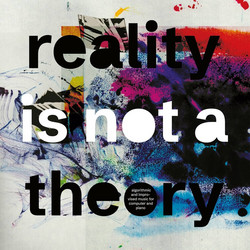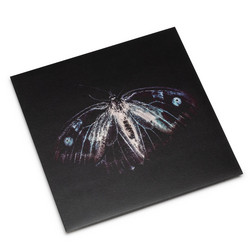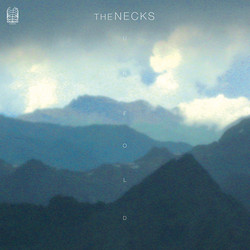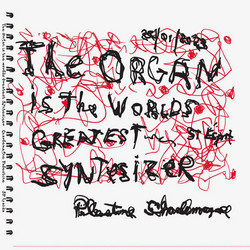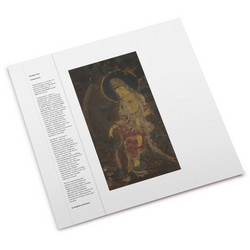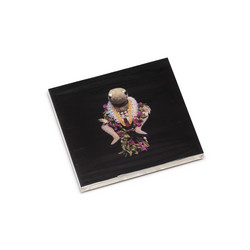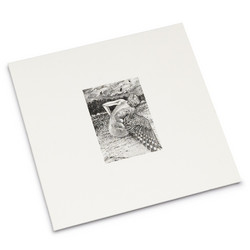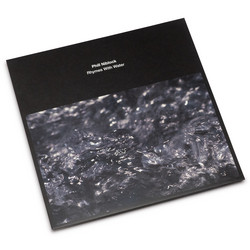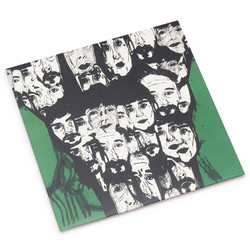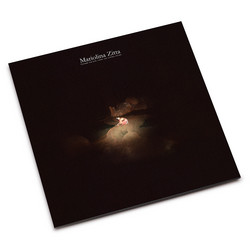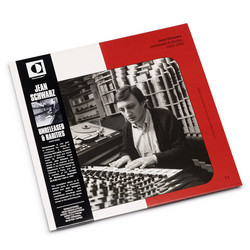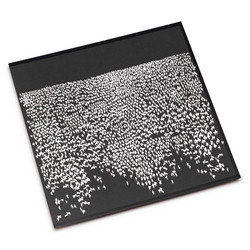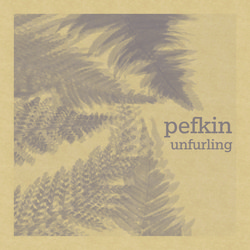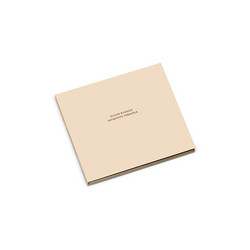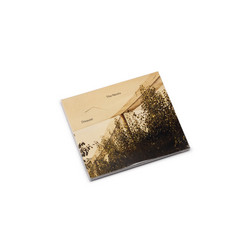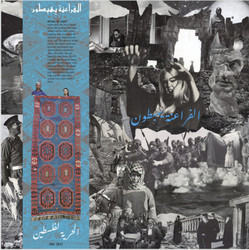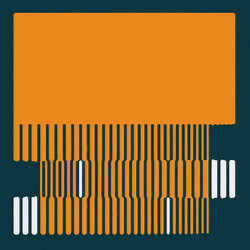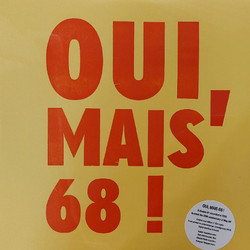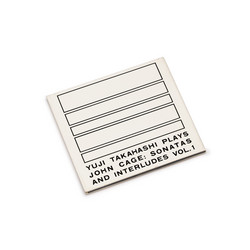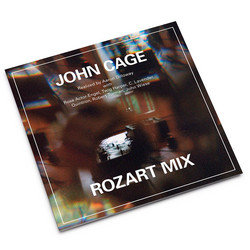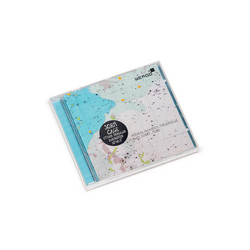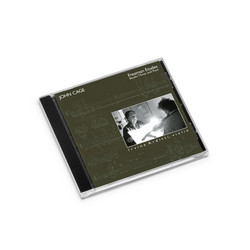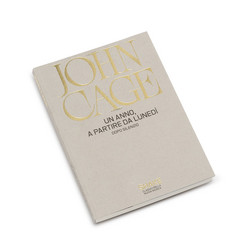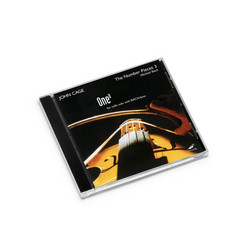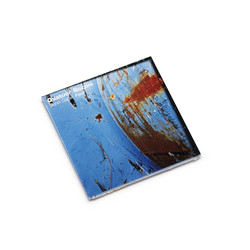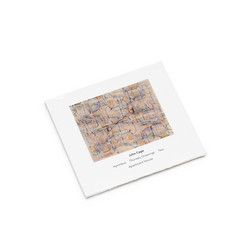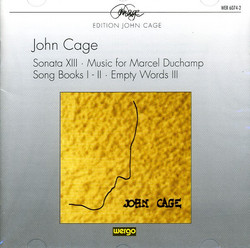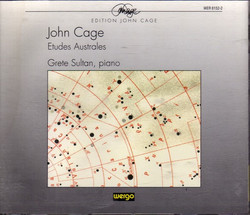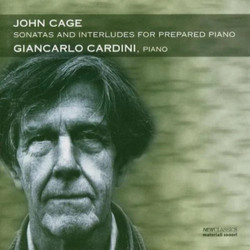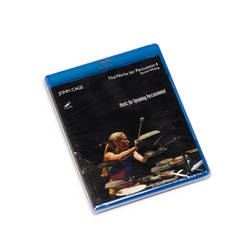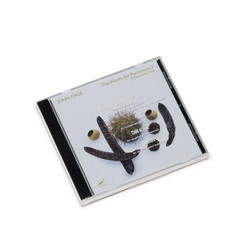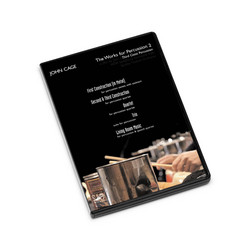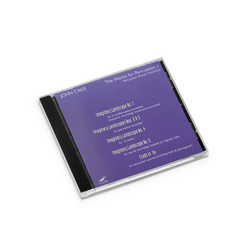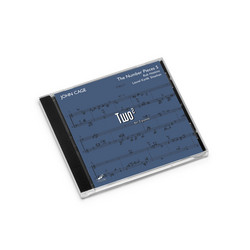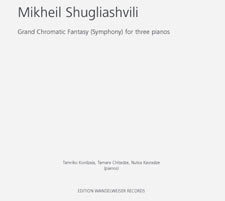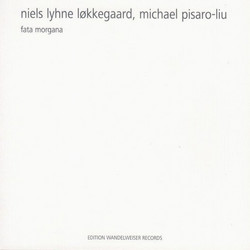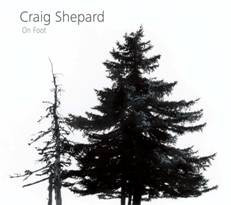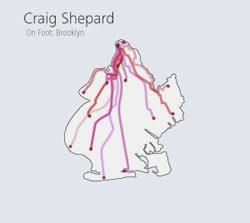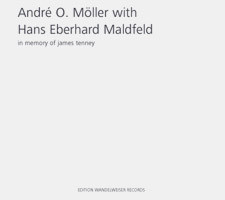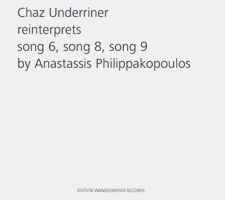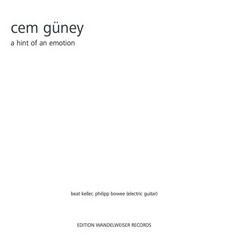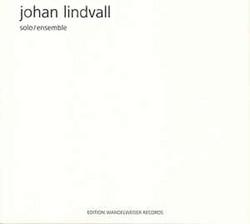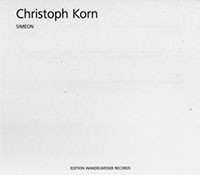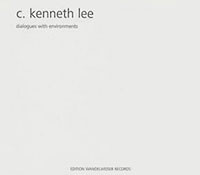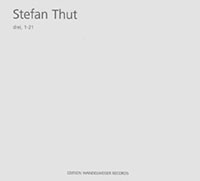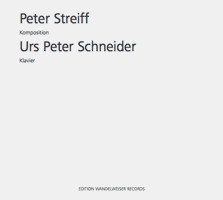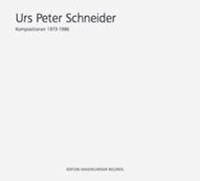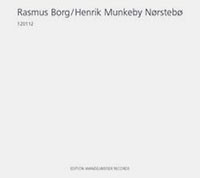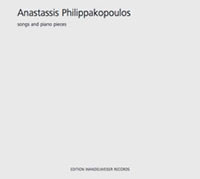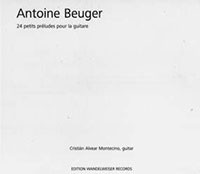John Cage, Burkhard Schlothauer
for seven players
Seven (1988), 15 similar events (2002)
Let’s assume, that art music as a field of creative cognitive activity is interrelated with the scientific paradigm and that its structure, therefore, at least partially reflects the contemporary way of looking at the world. The essential paradigmatic elements of the early 21st century would then entail all kinds of demands on music.
Having lost certainties, for example, the issue of probabilities should be broached.
Fields of possibilities should be designed. Non-hierarchically structured complex systems
could be simulated and experienced by open sets of rules and by autonomous individuals playing with conditional and unconditional decisions.
The confined cosmos of the self-reflecting subject, 19th century epiphenomenon of the program of Enlightenment, were to give way to a joint encounter with the senselessness and purposelessness of contingency.
Different as they are, both works on this CD could be thought of as test arrangements in the sense of the preceding programmatic assumptions. Both works obtain their micro- and macrostructure by screening acoustic fields of possibilities in consistently equal time brackets.
In Seven each instrumental part has twenty time brackets: nineteen of them lasting 75 seconds each (with 15 seconds overlap between subsequent time brackets); one of them lasting 45 seconds (without overlap).
Within these time frames (more precisely defined by time brackets for the beginning and the ending of a sound) the sounds (more or less exactly defined with respect to tone quality) must be played in the given order. This temporal organisation defines the probabilty of sounds coinciding. Each concrete realization in performance, however, will be shaped differently.
The instruments are composed in groups, based on clearly specified sound characteristics.
The piano has to play comparatively many, often dense sound aggregates, left and right hand being composed separately.
The winds play long, repeating single tones.
The strings have scratchy col legno sounds, maximally exploiting their pitch range. Rubbing and scratching sounds to be selected by the performer characterize the percussion part. Its sounds are, consequently, not
defined with respect to pitch. As far as clear pitches emerge, they are a supplement to the composed set of pitches.
The pitches of the other instruments, as well as the order of the tones, have been obtained by chance operations and are exactly defined in the score.
A further indeterminacy as to pitch results from the instruction „legno” for all strings. It remains open, whether only the wood of the bow should be used to produce the sounds or if the wood may be combined with the bow hair. Playing with no hair at all brings about a very brittle and unstable tone, especially in the higher regions, that sometimes takes on a highly unpredictable character, much like the rubbing percussion sounds.
In this recording the decision about how to play the col legno was left to the players.
Each player individually decides, when to play within a given time bracket. No interaction between the players is intended.
15 similar events defines sound as a concatenation of subsequent and sometimes
overlapping sound events. In 15 time brackets of 2´24´´ each the string trio, the flute and the piano each play a sound selected from a given list (there is a list for each instrument).
Each such list has 5 sounds, one of which should be used 5 times, one 4 times, one 3 times, one 2 times and 1 only one time during the course of the piece.
Within the first minute of a time bracket one player starts his sound. The other players then gradually blend their sounds into the unfolding sound event. This process should be continuous and not be interrupted by a pause between the single sounds.
If nobody starts playing within the first minute of a time bracket, no player is allowed to play during that section, except for the clarinet.
Each player stops playing, when his sound (no circular breathing, no bow change) ends.
Before the beginning of the next event in the ensuing time bracket there should be a pause.
The sound world of the harmony instruments is homogeneous and of an airy sonority, the piano, harmonically integrated with its historical sound, appears as something foreign, like in seven.
The instruments are interdependent, they interact only very distantly.
The clarinet plays its microtonal periodical melodies every four minutes.
The percussion with its decelerated elementary rhythms follows a separate time plan, that relates in varying ways to the time brackets of the other players.
Harmony, rhythm and melody: three event layers, that have nothing in common but their occurring at the same
time at the same place and their arriving at our ears as a conjoint sound wave.
Maybe it is music’s potential to mean nothing that makes it so special?
Maybe the encounter with such an art form may reconcile us with the contingency of life and death in our world?
Maybe contingency and, consequently, meaninglessness is the dimension of the world, which we have to come to terms with?
Burkhard Schlothauer (Translation: Antoine Beuger)


